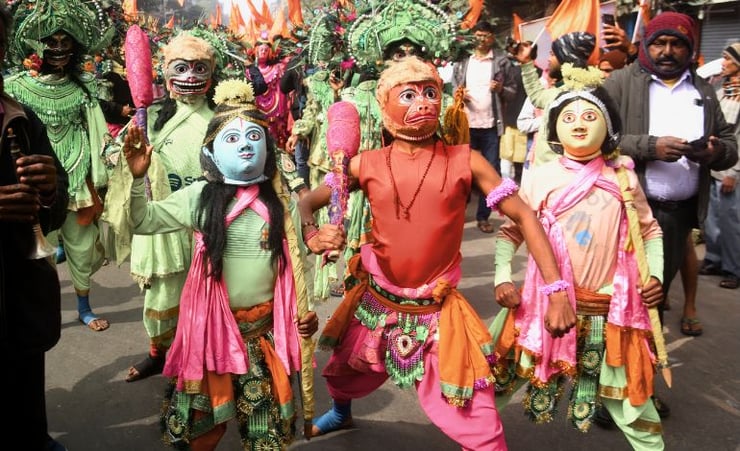Ram Mandir: Ethnic Media must focus on nuanced reporting

A very senior New Zealand diplomat in New Delhi, when asked to describe their tenure in the capital city of the world’s fastest growing economy, brilliantly summed it up in a sentence: “I now know why the belief in rebirth is necessary, and I’m a believer too. It is impossible to know this country in a single lifetime.”
While that may look like a clever quip, it is one of profound significance. And this worthy diplomat is one in a long line of eminent persons who have expressed similar sentiments throughout history.
Celebrated American philosopher and author Will Durant wrote: “India was the motherland of our race, and Sanskrit the mother of Europe’s languages: she was the mother of our philosophy; mother, through the Arabs, of much of our mathematics; mother, through the Buddha, of the ideals embodied in Christianity; mother, through the village community, of self-government and democracy. Mother India is in many ways the mother of us all”.
And legendary American author Mark Twain famously said: “India is the cradle of the human race, the birthplace of human speech, the mother of history, the grandmother of legend, and the great grandmother of tradition. our most valuable and most instructive materials in the history of man are treasured up in India only.”
The new resurgent Bharat is only re-emphasising its “Vishwa-guru” status, alluded to by these great writers and thinkers of the past and long acknowledged by some of the finest brains that shaped human thought down the centuries.
A continuously living – and thriving – civilisation of five millennia is bound to be complex to say the least. It is therefore not surprising that many elements of this Bharatiya civilisation are poorly understood – more so in today’s world of micro attention spans. Compound this with the tendency to conflate ideas without properly contextualising and you have a recipe for contention, often wantonly. It is not hard to see why Bharatiya culture and history are so easily misunderstood.
That is exactly what led a NZ media outlet to describe the recent Ram Temple function in Auckland’s Eden Park as a “nationalist rally”, which it wasn’t in most emphatic terms. The 7,000 people present there were devotees of Lord Ram and had congregated there to celebrate the consecration of the newly-built temple in Ayodhya. It was wrong to term it a nationalist rally.
But one can understand how such misconceptions could arise. It is difficult to compartmentalise anything in the multifaceted, free-flowing culture of Bharat. Religion, faith, language, social mores, cuisine, poetry, music, dance, sculpture, architecture, philosophy, mathematics and much more all flow seamlessly into one another. And so it is not hard to see how politics can be associated or conflated with any or all of these, depending on how you look at it.
Ethnic media serves as a bridge, connecting readers from diverse cultures to the multi-textured tapestry of Bharatiya life. It is tasked with unravelling the intricacies of historical, ethnic, cultural, and civilisational complexities that might elude the grasp of those reliant solely on what we term “mainstream media” for want of a better term. This responsibility extends beyond merely reporting events; it involves contextualising them in a manner that allows readers of varied backgrounds to understand and appreciate the subtleties at play.
The danger of misconceptions arises when events are viewed through the lens of preconceived notions or when attempts are made to compartmentalise the free-flowing elements of Bharatiya culture. As well as the recent mislabelling of a spiritual gathering as a “nationalist” political rally underscores the urgency for ethnic media to counter such misinterpretations and provide a more accurate portrayal.
The English language (and the English language education of ethnic subcontinental Journalists) poses unique challenges. Many of the terms they use have been handed them by colonial-era textbooks and teachers with little contextual knowledge of Bharatiya civilisation. One example that cropped up in local ethic media recently was the mischaracterising of the Ram Temple phenomenon as having to do with “myth”. More than a wilful attempt to so mischaracterise, it is probably because English textbooks in India have always described the epics as “mythologies” while they are clearly classified in Sanskrit literature as histories (Itihasa).
It is in cases like these that ethnic Indian English media content creators have to be dobly mindful. They have an important role to play in bringing a good measure of nuance in reporting and analysing of news and events, particularly issues that arise out of historical, ethnic, cultural and civilisational complexities that could potentially be poorly understood by the consumers of “mainstream media” outside Bharat.




